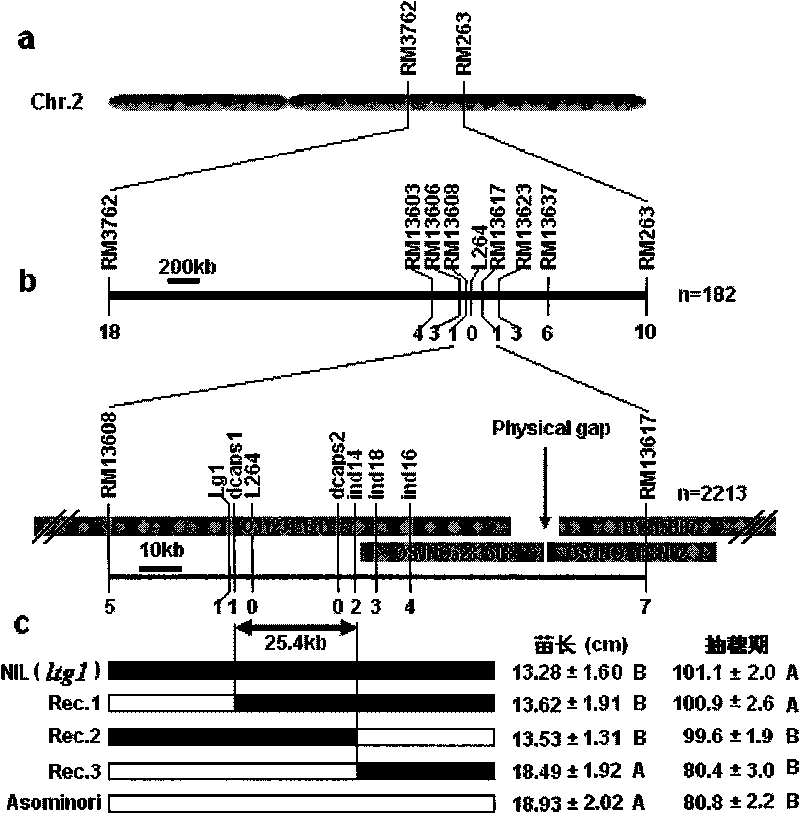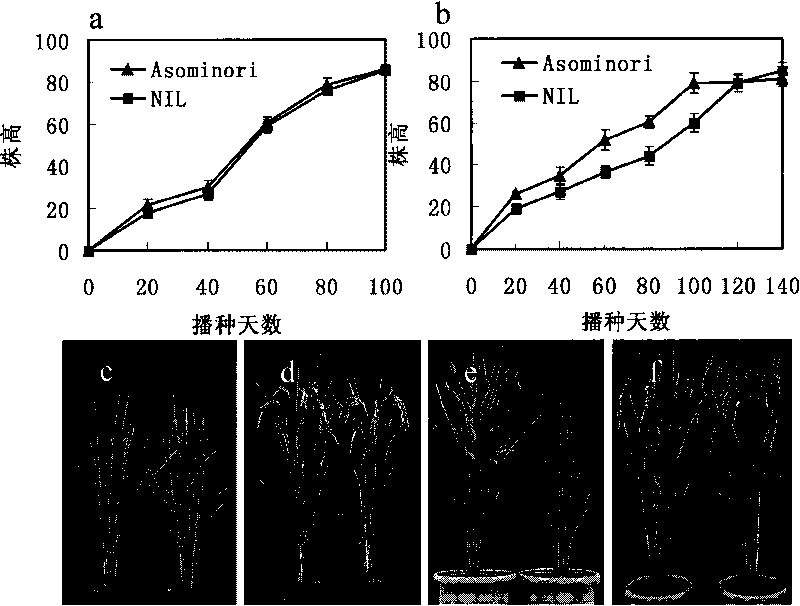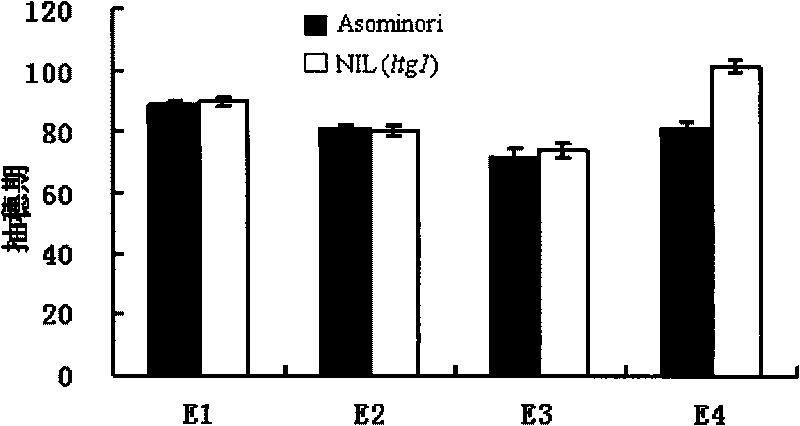Plant low temperature growth associated protein, code genes and application thereof
A gene and plant technology, which is applied to the low-temperature growth-related proteins of plants and their encoded genes and application fields, can solve the problems of low-temperature growth gene isolation and cloning that have not been reported, and achieves the ability to improve low-temperature tolerance and improve low-temperature tolerance. Effect
- Summary
- Abstract
- Description
- Claims
- Application Information
AI Technical Summary
Problems solved by technology
Method used
Image
Examples
Embodiment 1
[0041] Example 1. Discovery of OsCKI1 and its coding gene
[0042] 1. Genetic analysis and preliminary mapping of genes controlling low temperature growth in rice
[0043] From a set of chromosomal segment replacement lines (there are 66 families in total) with Asominori as the genetic background carrying an IR24 insertion, a family CSSL13 was found to have a cold-sensitive phenotype, and this family carried an IR24 insertion on the long arm of the second chromosome . The F1 of CSSL13 crossed with the background parent Asominori showed the Asominori phenotype, which confirmed that the phenotype sensitive to low temperature was a recessive phenotype. By investigating the segregation ratio of 144 F2 plants, we found that 36 plants exhibited the same phenotype as CSSL13 (3:1 ratio; x 2 ≈2.68figure 1 shown in a).
[0044] The method of initial positioning is as follows:
[0045] (1) Extract the total DNA of the above-mentioned selected single plant as a template, the specific ...
Embodiment 2
[0085] Embodiment 2, the acquisition and identification of transgenic plants
[0086] 1. Construction of recombinant expression vector
[0087] The pMD18-OsCKI1 constructed in step 3 of Example 1 was digested with HindIII and SacI, and the fragment containing the OsCKI1 gene was recovered, and connected to the pGA1611 vector (uniprotNo: 245199, the network link is http: / / www.uniprot.org / taxonomy / 245199; GENBANKACCESSION NO.AY373338.1) to obtain the recombinant expression vector.
[0088] The recombinant expression vector was transformed into Escherichia coli DH5a competent cells. The plasmid was extracted for enzyme digestion and sequencing detection. The detection results showed that a recombinant plasmid containing the OsCKI1 gene was obtained, which was named pGA1611-OsCKI1 (the backbone vector was pGA1611, and the OsCKI1 shown in sequence 2 was inserted between the HindIII and SacI sites. Gene).
[0089] Second, the acquisition of recombinant Agrobacterium
[0090] pG...
PUM
 Login to View More
Login to View More Abstract
Description
Claims
Application Information
 Login to View More
Login to View More - R&D
- Intellectual Property
- Life Sciences
- Materials
- Tech Scout
- Unparalleled Data Quality
- Higher Quality Content
- 60% Fewer Hallucinations
Browse by: Latest US Patents, China's latest patents, Technical Efficacy Thesaurus, Application Domain, Technology Topic, Popular Technical Reports.
© 2025 PatSnap. All rights reserved.Legal|Privacy policy|Modern Slavery Act Transparency Statement|Sitemap|About US| Contact US: help@patsnap.com



